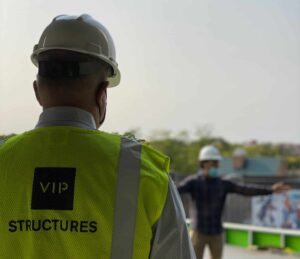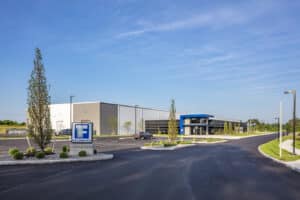Building information modeling (BIM) has transformed the design-build industry over the last decade. This 3D design tool helps architecture, engineering, and construction (AEC) firms transform the way projects are designed and constructed by collaborating on decisions early in the planning phase.
When used to its full potential, BIM can decrease time and cost, improve efficiency, streamline processes, and increase quality. BIM is highly valuable with benefits widely understood across industries and organizations.
Benefits of BIM include:
Detects potential issues
Visualizes results
Projects remain on target and on time
While implementing BIM design may allow AEC firms to keep up with industry trends, it can be a difficult and disruptive process. Use these best practices to ensure a cohesive and easy BIM transition.
Step 1: Create a BIM Transition and Training Plan
For larger firms, implementing BIM into every process, team, and work environment too quickly can cause issues. BIM changes the way organizations work. Difficulties arise when trying to force the technology into every aspect of an AEC firm at the same time. Moving too quickly during the transition process can create an uncomfortable work environment and lead to a loss of day to day business goals.
Instead, develop a change management plan where the BIM transition process is rolled out in stages. Start with one team to determine workflows, scheduled training, etc. The main portion of the workload will be training staff. This will require a lot of effort and a solid training plan.
Consider completing a pilot program first and then capture all lessons learned. Uncover what worked best and what needs to be improved before moving on to transitioning the rest of the office. One team at a time is best.
Step 2: Account for BIM Software and Hardware Needs
BIM is more than just software. BIM is a brand-new process that changes how teams collaborate. It relies on intelligent 3D models to achieve successful results. Additional software is often required to help create these models.
Explore and determine what available modeling software best offers insights in planning, designing, and managing the construction of buildings.
Consider these BIM software solutions:
Autodesk BIM 360
Tekla BIMsight
Revit
Navisworks
BIMobject
Step 3: Determine the Right Work Environment for BIM
As previously mentioned, BIM is more than just software. It is a process. To make this process work, it is important to create the right work environment. For BIM to be successful, have a collaborative work structure, allowing for immediate communication. Encouraging teams to work cohesively by attaching necessary data and documents in work processes is a great first step.
Another way to create the right work environment is to cultivate a few BIM office champions. Find employees who are really excited and ready to use BIM. Then, put at least one champion on every BIM project. These individuals will provide additional training and support for BIM to the rest of the staff as the process continues.
Step 4: Understand the Stages of BIM
Once BIM is implemented into an AEC firm, it is important to follow a set of maturation stages:
Stage One: BIM is implemented into an AEC firm, but not for several clients
Stage Two: Begin formalizing what BIM is with clients
Stage Three: BIM is contractual and mandatory in more than 60% of projects
Be prepared to go through these stages. It will be worth the wait for the final stage.
Step 5: Innovate
BIM should not stifle creativity or innovation. In fact, BIM enables AEC firms to visualize, coordinate, and analyze work in new and exciting ways. Take time to determine how new capabilities of BIM enhance value and improve service offerings.
Implementing BIM into an AEC firm can be a smooth and simple process if prepared. Use these steps as guidelines for getting started to ensure transitioning to BIM goes off without a hitch.
Learn More about VIP Structures
Our company specializes in architecture, engineering, construction, and development as a fully integrated design-build firm to help organizations with building needs all across Upstate New York.
Interested in learning more about our services at VIP Structures? Visit us on the web at www.vipstructures.com or contact us below by filling out our short form fill. Subscribe to our blog to get the latest news about what is happening in the A/E/C/D world.



